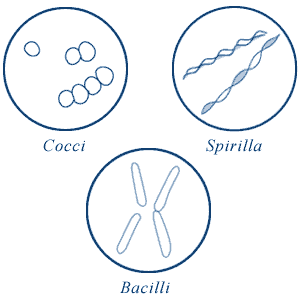

In prokaryotes, the bacterial genome, or chromosome, is a single, circular molecule of double-stranded DNA, lacking a nuclear membrane (smaller, single or multiple circular DNA molecules called plasmids may also be present in bacteria), whereas the eukaryotic cell has a true nucleus with multiple chromosomes surrounded by a nuclear membrane.īacteria comprise the vast majority of human pathogens, while archaea appear rarely to cause human disease and live in extreme environments (e.g. Fungi, protozoa and humans, for instance, are eukaryotic, whereas bacteria are prokaryotic. Archaea and Bacteria) and eukaryotes (Greek karyon: nucleus). Other differences between viruses and cellular organisms include:Īs mentioned above, another modification of classifying cellular organisms is to divide them into prokaryotes (i.e. Viruses are not included in this classification as they are unique, acellular, metabolically inert organisms and therefore replicate only within living cells. Polysaccharide cell walls, where present, are generally either cellulose or chitin Ribosomes – 80 S (mitochondrial and chloroplast ribosomes are 70 S) Ribosomes behave more like eucarya when exposed to inhibitors Membrane vesicles such as lysosomes and peroxisomes presentįlagella consist of one protein, flagellinĬontains flagella that derive energy from proton pumpsįlagella have a complex structure with 9 + 2 microtubular arrangement

Internal membranes, endoplasmic reticulum and Golgi apparatus present associated with protein synthesis and targeting Photosynthesis associated with membrane systems and vesicles in cytoplasmĬhloroplasts present in algal and plant cells No lipopolysaccharides or teichoic acids foundĮnergy metabolism associated with the cytoplasmic membrane Lipopolysaccharides and teichoic acids found Meiosis leads to the production of haploid cells (gametes), which can fuse Processes similar to bacterial conjugation enables exchange of genetic materialĮxchange of genetic information occurs during sexual reproduction. Transfer of genetic information occurs by conjugation, transduction and transformation (see Chapter 3) Reproduce asexually and spores are not found May contain extrachromosomal elements called plasmidsĬell division by binary fission – asexual replication only Two copies of each chromosome may be present (diploid)ĭNA associated with histone-like proteins Organization of the genetic material and replicationĭNA is contained with a membrane-bound nucleus. Table 2.2 Major differences among the three domains of life Bacteria Table 2.1 Differential characteristics of major groups of organisms


 0 kommentar(er)
0 kommentar(er)
